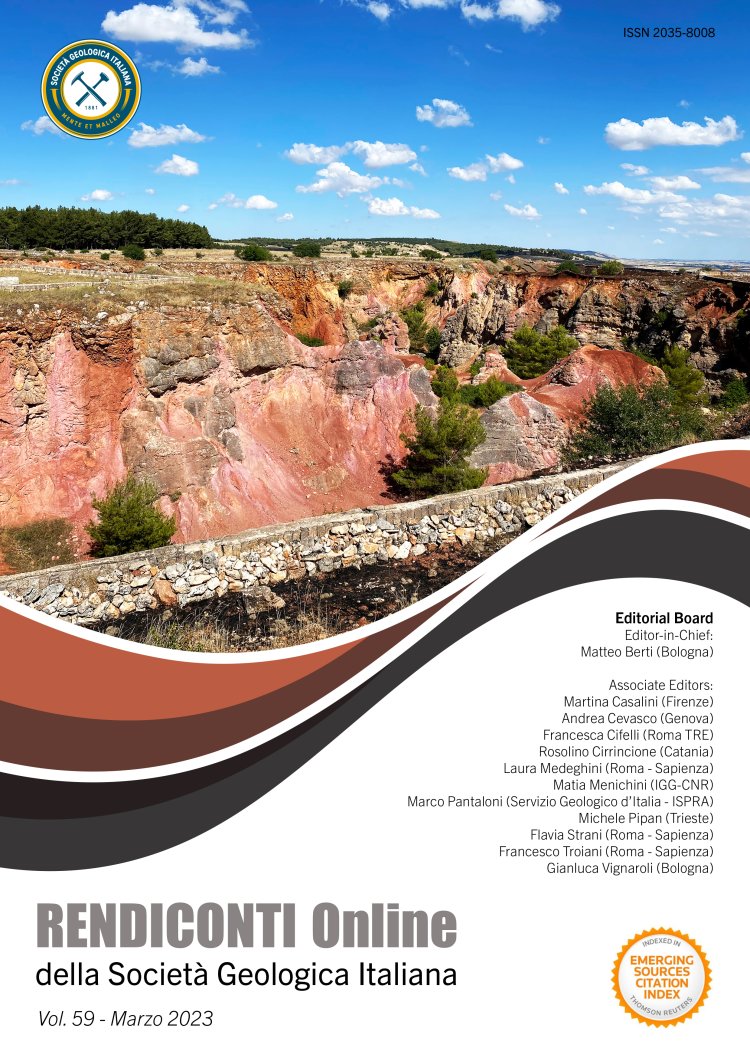

The role of the geological model in the analysis of land subsidence: a key lecture from the Volturno River alluvial plain (southern Italy)
Carla Buffardi1, Marco Vigliotti1 & Daniela Ruberti1
Department of Engineering - University of Campania L. Vanvitelli, Via Roma, 9, 81031 - Aversa (CE), Italy.
Corresponding author e-mail: carla.buffardi@unicampania.it
Volume: 59/2023
Pages: 139-144
Abstract
The present study focused on the relationships between subsidence and geological and geotechnical features of the Volturno River alluvial and coastal plain (northern Campania, Italy). Subsidence rates were determined through InSAR data analysis. A lithostratigraphic reconstruction was provided for the Holocene succession that overlay a continuous, thick, volcaniclastic unit (Campania Grey Tuff) deposited 39 ka B.P. The digital surface model carried out for this unit showed a palaeovalley morphology, allowing the reconstruction of the palaeodrainage network and a better modeling of the stratigraphic architecture of the post-CGT deposits. The subsidence map was overlain spatially with geological data. In the whole plain, the major ground deformations affect the sedimentary piles filling the palaeovalley engraved in the volcanic compaction-free basement. Inside the general subsidence trend, differential compaction was detected within these deposits corresponding to the occurrence of clay and peat of different thicknesses, suggesting that the subsidence rates are due in part to the primary consolidation and in large part to the secondary consolidation.
Keywords
Volturno River alluvial-coastal plain, subsidence, lithostratigraphic reconstruction, Holocene, Campania Grey Tuff.
Get Full Text